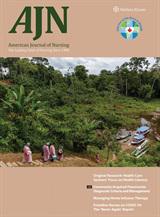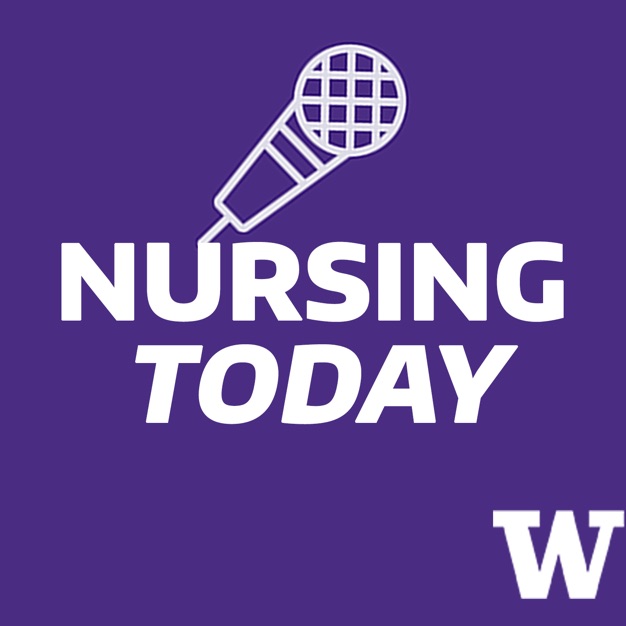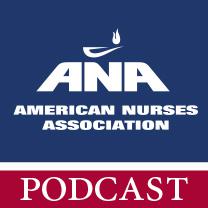
AJN The American Journal of Nursing - Behind the Article
AJN The American Journal of Nursing
Article-related interview with author or other expert
- 28 minutes 21 secondsDNP Capstone Game Changers: Working with your librarian to search the literature and conducting a rapid critical appraisal of the evidence


In this episode of The AJN Podcast, lead authors Ellen Fineout-Overholt, PhD, RN, EBP-C, FNAP, FAAN, and Kerry A. Milner, APRN, FNP-BC, EBP-C, discuss the fourth article in the Evidence-Based Decision-Making (EBDM) series, “Critical Appraisal of Evidence for DNP-Prepared Nurses,” which highlights the importance of collaborating with a librarian to retrieve the necessary evidence for answering clinical questions. It also covers the initial 2 stages of the critical appraisal process: rapid critical appraisal and evaluation.
The article can be found here: https://journals.lww.com/ajnonline/fulltext/2024/10000/critical_appraisal_of_evidence_for_dnp_prepared.22.aspx
Find the entire collection of EBDM articles and a repository of helpful tools associated with this series here: https://journals.lww.com/ajnonline/pages/collectiondetails.aspx?TopicalCollectionId=60
4 December 2024, 5:04 pm - 42 minutes 56 secondsArtificial Intelligence: How Nurses Are Using AI to Improve Patient Care and What You Can Do to Get Involved


In this episode of The AJN Podcast, AJN senior clinical editor Christine Moffa speaks with professors Lisiane Pruinelli, PhD, MS, RN, FAMIA, and Jung In Park, PhD, RN, FAMIA.
Resources:
The American Medical Informatics Association (AMIA) 10x10 Virtual Programs offer a selection of health and nursing informatics courses in a convenient online format: https://amia.org/education-events/amia-10x10-virtual-courses
NAILCollab: https://www.nailcollab.org
FloGatorAI blog: https://nursing.ufl.edu/2024/10/15/welcome-to-flogatorai-where-nursing-ai-and-innovation-converge
Dr. Pruinelli’s LinkedIn: https://www.linkedin.com/in/lisianepruinelli and faculty webpage: https://nursing.ufl.edu/profile/pruinelli-lisiane
31 October 2024, 5:10 pm - 23 minutes 57 secondsTips for Avoiding Pitfalls when Performing a Systematic Search of the Literature


In this episode of The AJN Podcast, Kerry A. Milner, DNSc, APRN, FNP-BC, EBP-C, and Ellen Fineout-Overholt, PhD, RN, EBP-C, FNAP, FAAN return to discuss the third article in the Evidence-Based Decision-Making series, “Removing Persistent Barriers to Systematic Searching.”
The article can be found here:
The tools discussed in the episode and the article can be found in our Evidence-Based Decision-Making repository: https://journals.lww.com/ajnonline/Pages/Evidence-Based-Decision-Making-Series-Helpful-Tools.aspx.
https://journals.lww.com/ajnonline/abstract/2024/07000/removing_persistent_barriers_to_systematic.19.aspx24 September 2024, 6:25 pm - 15 minutes 4 secondsWhat Does the AACN Have Planned This Year?

In this episode of The AJN Podcast, American Association of Critical-Care Nurses (AACN) president Jennifer Adamski shares the AACN’s latest initiatives, including new standards and a new theme, “Courage to Soar.”
AACN website: https://www.aacn.org
AACN Standards: https://www.aacn.org/nursing-excellence/aacn-standards
Jennifer Adamski reveals the new theme for AACN 2024-2025: https://www.youtube.com/watch?v=dtx8t3r2Vzw30 August 2024, 5:35 pm - 26 minutes 11 secondsTips on Developing Your Clinical Question for an EBP Project



In this episode of The AJN Podcast, Deana Hays, DNP, APRN, FNP-BC, Kerry A. Milner, DNSc, APRN, FNP-BC, EBP-C, and Ellen Fineout-Overholt, PhD, RN, EBP-C, FNAP, FAAN discuss the second article in the Evidence-Based Decision-Making series, “Clinical Inquiry and Problem Identification.”
Read the article here: https://journals.lww.com/ajnonline/fulltext/2024/05000/
clinical_inquiry_and_problem_identification.22.aspx.The tools mentioned in the podcast and article can be found in the EBDM repository: https://journals.lww.com/ajnonline/Pages/Evidence-Based-Decision-Making-Series-Helpful-Tools.aspx.
All of the articles in the Evidence-Based Decision-Making series can be found as a collection here: https://journals.lww.com/ajnonline/pages/collectiondetails.aspx?TopicalCollectionId=60.
If you are following the series or using it with your students, AJN would love to hear your thoughts. Please send an email to [email protected].
12 August 2024, 3:13 pm - 13 minutes 49 seconds“Learning the Legislative Process to Advocate for Patient Care and the Nursing Profession” with guest Emily Bell, MSN, RN, LNP, PMHNP-BC

Practical Guide to Legislative Change as a Registered Nurse
1.Learn about what level of government would make the changes you want to see. Find out: is this a federal, state, or local issue? Federal government example: Medicare and Medicaid (CMS) reimbursement rates for advanced practice nurses State government example: Scope of practice for advanced practice nurses
2.Figure out WHO are the elected officials that represent you at that level of government because you are their constituent. It is their job to listen to your concerns!Best website: https://www.usa.gov/elected-officials
Federal legislators: One U.S. House of Representatives member (representing your congressional district, where you live in the state) and two senators (represent the entire state, not just your district) State legislators: State house representative and state senator (typically both represent a district within your state) Local officials:County/City Executive/Supervisor/Commissioners, etc. 3.Learn about your elected officials! Federal legislators will have at least two offices; one in Washington, DC, and one or more within the congressional district. Each office has federal congressional staffers working to address constituents’ concerns and provide official follow-up. A U.S. House member specifically represents your district’s needs (including you as a constituent) to Congress more so than U.S. Senators, as they represent your entire state’s needs. 4.If you are interested in a state issue, please be aware that state representatives and senators are “part-time” legislators. State legislative bodies typically meet in the first months of the year but occasionally are called back for special sessions. This website shows upcoming state legislative schedules: https://documents.ncsl.org/wwwncsl/About-State-Legislatures/2024-sessions-calendar.pdf 5.It is important to be aware of your legislator’s committee assignments and if they serve in any kind of leadership role. Do they sit on a health committee? Are they the chair of a committee? Committee assignments often are related to the member’s legislative areas of expertise and related to their professional background before running for elected office. Committees will be the first place legislative change will be introduced, debated, and voted on before coming to the full legislative body. 6.Many organizations develop a form letter for you to send to a legislator regarding an issue or a specific bill. These are helpful but be aware that if you cut/paste, sign, and send, your letter will be placed in a pile with the rest; depending on the size of the pile of form letters about one issue, this will impact how much attention the office and the elected official gives to a certain topic. Please take 5-10 minutes to personalize the form letter with your own experiences and always make sure to include in the first sentence that you are a constituent of the elected official (and maybe if you voted for them). Talk about how the congressional district is impacted by the issue specifically. Provide your background as a nurse and your contact information so the legislative staff may follow up with you about your experience and your expertise on the subject. 7.Reach out to nursing organizations that may already be advocating for this issue.They may have a legislative “champion” that has sponsored bills in the past and is helping to move towards progress on this issue.- Some nursing organizations are allowed to hire lobbyists, and some organizations cannot because of their tax filing statuses.
- Some nursing organizations have political action committees (PACs) that raise money to impact legislation.
- Nursing organizations can come together into coalitions to move forward complex legislative issues.
- Volunteering is easy and fun. The campaign provides you with all the training and materials. You just provide your time and enthusiasm.
Examples: Phone banking, door knocking, fundraising
23 May 2024, 3:20 pm - 22 minutes 19 secondsDesigning Nurses: What Do Nurses in Design Do?

In this episode of The AJN Podcast, Susan O’Hara, PhD, MPH, RN, BA, EDAC, FNIHD, discusses the role of nurses in design and the impact they make on patient care and nurse safety.
Resources for nurses interested in health care design:
Journals
HERD - Health Environments Research and Design Journal -https://journals.sagepub.com/home/HER
BHAC - Building Healthy Academic Communities Journal - https://ojs.library.osu.edu/index.php/BHAC
AJN - American Journal of Nursing - https://journals.lww.com/ajnonline/pages/default.aspx
Conferences
HCD Healthcare Design - https://www.hcdexpo.com
Environments for Aging - https://environmentsforaging.com
PDC Planning, Design, and Construction - https://www.ashe.org/education-events/pdc-summit-2024-san-diego
Organizations, Certifications, and Other Resources
CHD Center for Health Design - https://www.healthdesign.org
EDAC Evidence-Based Design Accreditation and Certification (EDAC) - https://www.healthdesign.org/certification-outreach/edac
FGI Facility Guideline Institute FGI Guidelines (Hospital, Outpatient, Residential) - https://fgiguidelines.org
NIHD Nursing Institute for Healthcare Design - https://nursingihd.com
Phases of Design
Architecture Explained: The Phases of Designing and Building a Project - https://wc-studio.com/journal/2019/7/5/working-with-an-architect-understanding-phases-of-design-construction
Architectural Design Process: A Quick Guide https://www.projectmanager.com/blog/architectural-design-process
Universities/Programs
The Ohio State University College of Nursing, Center for Healthcare Innovation and Leadership, Master of Healthcare Innovation - https://nursing.osu.edu/academics/masters/master-healthcare-innovation
The Ohio State University Knowlton School of Architecture - https://knowlton.osu.edu
New York University, Rory Meyers College of Nursing. The Course: “The Environment and Health of Populations” - https://nursing.nyu.edu
References
Cordoza, M., Ulrich, R. S., Manulik, B. J., Gardiner, S. K., Fitzpatrick, P. S., Hazen, T. M., Mirka, A., & Perkins, R. S. (2018). Impact of Nurses Taking Daily Work Breaks in a Hospital Garden on Burnout. Am J Crit Care, 27(6), 508-512. https://doi.org/10.4037/ajcc2018131
Fawcett, J. (2023). Thoughts About the Metaparadigm of Nursing: Contemporary Status and Recommendations for Evolution. Nursing Science Quarterly, 36(3), 303-305. https://doi.org/10.1177/0894318423116977
Godin, M. R., & Nasr, A. S. (2023). Assessing the Impact of a New Pediatric Healthcare Facility on Medication Administration: A Human Factors Approach. Journal of Nursing Administration, 53(6), 331-336. https://doi.org/10.1097/NNA.0000000000001295
McDonald, L. (2020). Florence Nightingale’s influence on hospital design, hospitalism, hospital diseases, and hospital architects. In (Vol. 13, pp. 30-35): SAGE Publications Sage CA: Los Angeles, CA.
Nightingale, F. (1863). Notes on hospitals (3d , enl. and for the most part rewritten ed.). Longman, Green, Longman, Roberts, and Green.
Nightingale, F. (2015). Notes on Hospitals. Dover Publications. http://www.myilibrary.com?id=729288
Nightingale, F., & Nursing, N. O. (1859). What it is and what it is not. Notes on nursing.
O'Hara, S. (2014). Planning intensive care unit design using computer simulation modeling: optimizing integration of clinical, operational, and architectural requirements. Critical Care Nursing Quarterly, 37(1), 67-82.
O'Hara, S., Klar, R. T., Patterson, E. S., Morris, N. S., Ascenzi, J., Fackler, J. C., & Perry, D. J. (2018). Macrocognition in the Healthcare Built Environment (mHCBE): A Focused Ethnographic Study of "Neighborhoods" in a Pediatric Intensive Care Unit. HERD, 11(2), 104-123. https://doi.org/10.1177/1937586717728484
Obeidat, B., Younis, M. B., Al-Shlool, E. a., & Alzouby, A. (2022). A study of workspace design characteristics exemplified by nurses’ satisfaction within three intensive care units in a university hospital. HERD: Health Environments Research & Design Journal, 15(2), 63-78. https://doi.org/10.1177/19375867211055
Stichler, J. F. (2015). Using Magnet® as a Framework for Nurse Participation in Facility Design. JONA: The Journal of Nursing Administration, 45(1), 11-13. https://doi.org/10.1097/NNA.0000000000000150
Ulrich, R. S. (1984). View through a window may influence recovery from surgery. Science, 224(4647), 420-421. https://doi.org/10.1126/science.6143402
Zamani, Z., Joy, T., & Gobel, D. (2024). “We Have Outgrown Our Space; Our Facility Is Old and Falling Apart”: Physical Design Implications to Address the Needs and Priorities of a Critical Access Hospital (CAH). HERD: Health Environments Research & Design Journal, 17(1), 306-325. https://doi.org/10.1177/19375867231188148
11 April 2024, 10:49 am - 16 minutes 16 secondsConversation with Kerry A. Milner, DNSc, APRN, FNP-BC, EBP-C, and Ellen Fineout-Overholt, PhD, RN, EBP-C, FNAP, FAAN


In this episode of The AJN Podcast, Kerry A. Milner, DNSc, APRN, FNP-BC, EBP-C, and Ellen Fineout-Overholt, PhD, RN, EBP-C, FNAP, FAAN discuss the role of evidence-based decision making in nursing education and patient care.
Milner and Fineout-Overholt share details on AJN’s new Evidence-Based Decision Making series, and the first article in the series, “Cultivating an Evidence-Based Decision-Making Mindset,” which can be found in the February issue and online at https://journals.lww.com/ajnonline/fulltext/2024/02000/cultivating_an_evidence_based_decision_making.20.aspx.
Below is the article’s full list of authors:
Kerry A. Milner is a professor in the Davis and Henley College of Nursing at Sacred Heart University in Fairfield, CT. Deana Hays is an associate professor at Oakland University in Rochester, MI. Susan Farus-Brown is an associate professor at the Ohio University School of Nursing in Athens. Mary C. Zonsius is an associate professor at the Rush University College of Nursing in Chicago. Ellen Fineout-Overholt is national senior director, Evidence-Based Practice & Implementation Science, at Ascension in St. Louis. Contact author: Kerry A. Milner, [email protected].
12 March 2024, 1:27 pm - 22 minutes 14 secondsConversation with Gabrielle Abelard, DNP, PMHNP, PMHCNS-BC, APRN, FNAP, FAAN

NP, entrepreneur, and professor, Gabrielle Abelard, DNP, PMHNP, PMHCNS-BC, APRN, FNAP, FAAN, joins The AJN Podcast and shares her business experience, wisdom, and insight on what APRNs need to know and do before opening their own practice.
Some questions to think about:
1. What’s your “brand”?
2. How will you choose your practice name?
3. Which geographical location would you choose?
4. Will you go into business alone or take on partners?
5. Will you take health insurance or not?
6. What is your timeline?And many more!
Recommended books:
Nurse Practitioner's Business Practice and Legal Guide by Carolyn Buppert, JD, MS
The Doctor of Nursing Practice: A Guidebook for Role Development and Professional Issues by Lisa Astalos Chism, DNP, APRN, NCMP, FAANP
NP Notes: Nurse Practitioner's Clinical Pocket Guide by Ruth McCaffrey, DNP, ARNP, FNP-BC, GNP-BC, FAANP, and Humberto Reinoso, PhD, FNP-BC, ENP-BC30 January 2024, 8:40 am - 8 minutes 17 secondsConversation with Kathleen Russell-Babin, PhD, RN, NEA-BC, ACNS-BC

In this episode of The AJN Podcast, Kathleen Russell-Babin, PhD, RN, NEA-BC, ACNS-BC, vice president of professional practice at Inova Health System in Falls Church, VA, discusses implementation science (IS). Russell-Babin is the lead author of the first article in a new series for AJN, Applying Implementation Science. The article describes how a multisite health care organization developed a systemwide nurse-led IS Specialist program within a shared governance model. Russell-Babin shared, “The series will take each of our first five projects across our health care system and show concretely how we used our 10-step process or toolkit. It will help readers to visualize the realities of the methods.”
In a discussion after the episode was recorded, she added, “This process is not a quick fix. It is systematic and takes time. Depending on the topic, sometimes the barriers are more than you expect. But as Weiner and colleagues wrote, partial implementation gets partial results and so staying with the process and using mapped strategies is worth the effort.”
The article is open access and can be found here: https://journals.lww.com/ajnonline/fulltext/2023/12000/a_nurse_led_implementation_science_specialist.22.aspx.
Follow us through the series and learn how your organization can use implementation science to promote evidence-based practice and improve patient care.19 December 2023, 6:25 pm - 34 minutes 6 secondsConversation with Elizabeth A. Ayello, PhD, MS, RN, CWON, FAAN
 AJN
AJN
In this episode of The AJN Podcast, Elizabeth A. Ayello, PhD, MS, RN, CWON, FAAN, co-editor of Advances in Skin and Wound Care, discusses the role of the direct care nurse in wound and ostomy care. Listen as she shares valuable information and resources on the topic. Links to resources mentioned in the podcast are available below.
Nursing 2023 article: https://journals.lww.com/nursing/fulltext/2023/08000/skin_and_wound_care_survey__2019_results.8.aspx
Guidelines:
EPUAP: https://www.epuap.org
NPIAP: https://npiap.com
PPIAP: https://pppia.org
International Skin Tear Advisory Panel (ISTAP): https://www.skintears.org
AJN article: Skin Assessment in Patients with Dark Skin Tone: https://journals.lww.com/ajnonline/fulltext/2023/03000/skin_assessment_in_patients_with_dark_skin_tone.20.aspx
Wound care skin tone article: https://journals.lww.com/aswcjournal/fulltext/2023/10000/using_technology_to_detect_erythema_across_skin.4.aspx
A stakeholder is anyone who has interest in pressure ulcers/injuries who wishes to provide input into the International PI Guideline. Check out this link: https://internationalguideline.com/stakeholders
25 October 2023, 9:13 am - More Episodes? Get the App
Your feedback is valuable to us. Should you encounter any bugs, glitches, lack of functionality or other problems, please email us on [email protected] or join Moon.FM Telegram Group where you can talk directly to the dev team who are happy to answer any queries.
 Johns Hopkins School of Nursing Podcasts
Johns Hopkins School of Nursing Podcasts
 Nursing Today
Nursing Today
 AJN The American Journal of Nursing - Conversations
AJN The American Journal of Nursing - Conversations
 American Nurses Association
American Nurses Association
 SAGE Nursing and Other Health Specialties
SAGE Nursing and Other Health Specialties